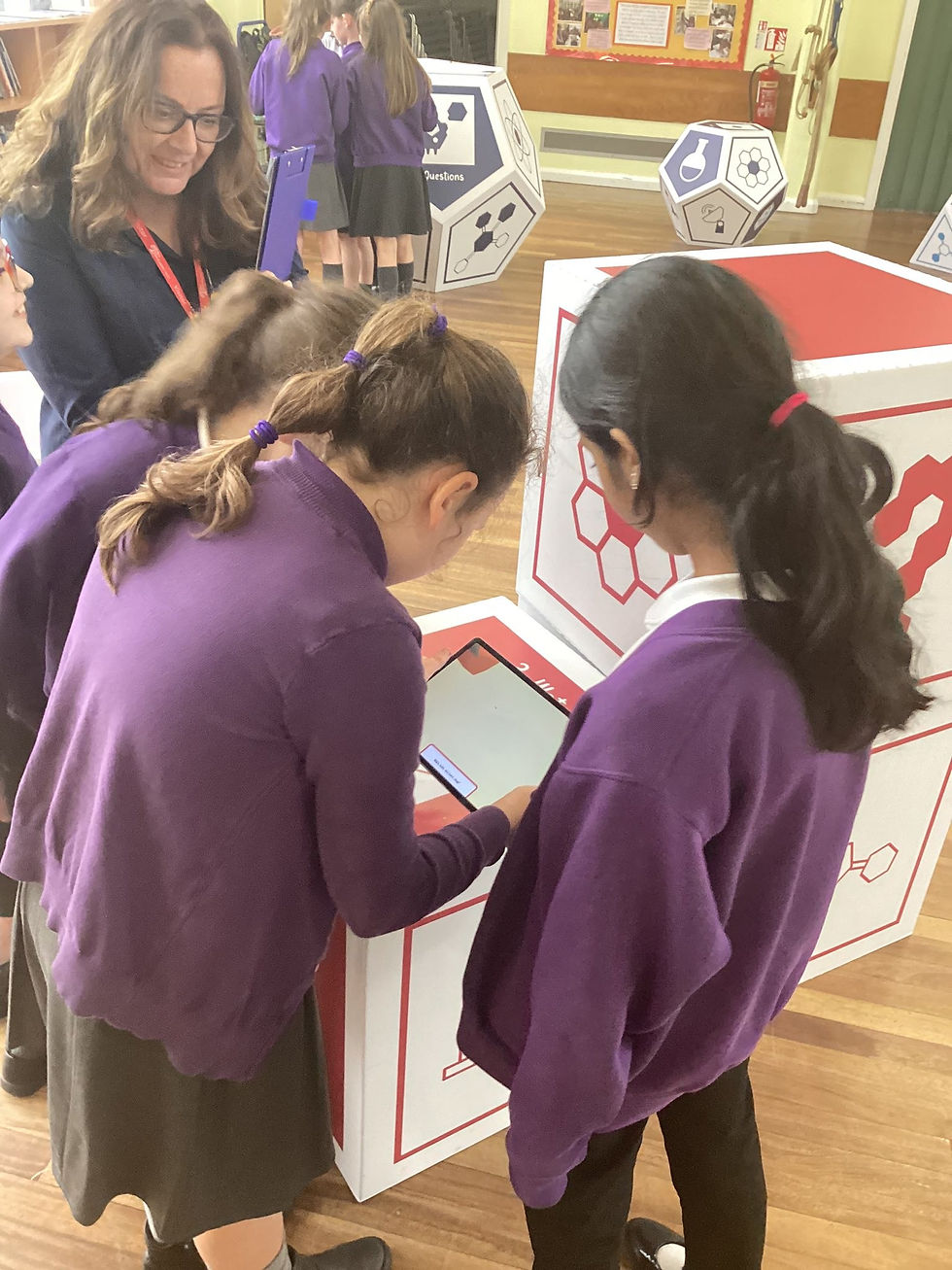



Development
Service Design Methodology
The project aims to gain a holistic insight into how AR experiences should be best integrated into contexts of primary school science teaching. Therefore, we chose to employ a Service Design approach for our investigation. Service design adopts a designer’s approach towards tackling a problem where it initially investigates the need of an end user, transitioning onto rapidly experimenting and prototyping. When we are challenged to provide better services and end-to-end customer experiences, ‘service design’ uses a pragmatic iterative approach towards developing whole new propositions particularly based on new technologies. Today, we can see AR is being used in many sectors to transform a customer's journey through unique experiences. Brown (2009) acknowledges that an everyday device is already considered a service – a mobile phone that connects us to a network of telecommunications – and the lines between product and service have become blurred.
Phase One: Exploration
We present a study exploring teachers’ opinions on using Augmented Reality to support primary science education, specifically focusing on:
RQ1: Where do challenges and opportunities occur for integrating augmented reality into primary science?
RQ2: How can we understand user needs to create a more meaningful AR learning experience?
Our aim was to gain a holistic insight into how AR experiences should be best integrated into contexts of primary school science teaching. Therefore, we chose to employ a Service Design approach for our investigation. Following the four iterative steps, this study focuses on the ‘Exploration’ stage: conducting an online questionnaire, empathy mappings, classroom observations, contextual interviews, and focus groups.
Building on insights from the exploration phase, the project published a journal paper identifying key opportunities and barriers for primary school teachers and pupils using augmented reality (DOI: 10.3926/jotse.1394). The findings highlighted a strategic moment for AR integration during school science events, such as science weeks, inspiration days, and parental engagement activities. Below is an inforgraphic of the findings realting to opportunities and barriers for primary schools to adopt augmented reality. The overall results suggested, the concept of an augmented reality school exhibition was met with enthusiasm by primary school teachers to engage pupils in primary science.
Phase Two: Creation
The creation phase focused on designing and developing the physical exhibition while mapping the user journey across five interconnected stations. This process involved a range of design processes, from constructing cardboard display structures and print materials to implementing sketch development, user interface, digital storytelling, character development, animation and audio creation. Additionally, the technical aspects included programming (blueprinting), AR marker creation, user experience flow design, and deploying an AR application on Android devices.
Phase Three: Implementation
The implementation stage provides critical insights into the exhibition's educational value, usability, interactions, and impact on primary science education. The focus is twofold:
RQ1: What are teachers’ and pupils’ perceptions of the Service and User Experience (UX) of an augmented reality (AR) exhibition?
RQ2: In what ways has the AR exhibition influenced pupils’ learning experiences?
Through this feedback, the project aims to identify areas of success and potential improvement, offering insights into the practical value and challenges of AR in supporting educational outcomes. The findings from Epic Science inform the use of AR for primary science education and more generally. This stage presents a study that explores teachers’ and pupils' perspectives (focus groups, field observations, interviews) relating specifically on interacting with a unique augmented reality exhibition, designed to enhance primary science education.

(Stickdorn., M. Hormess., M., Lawrence., A. Schneider., J. (2018). This is Service Design Doing.













Fearn, Warren and Hook, Jonathan (2023) A Service Design Thinking Approach: What are the barriers and opportunities of using Augmented Reality for Primary Science Education? Journal of Technology and Science Education, 13 (1). pp. 329-351.









